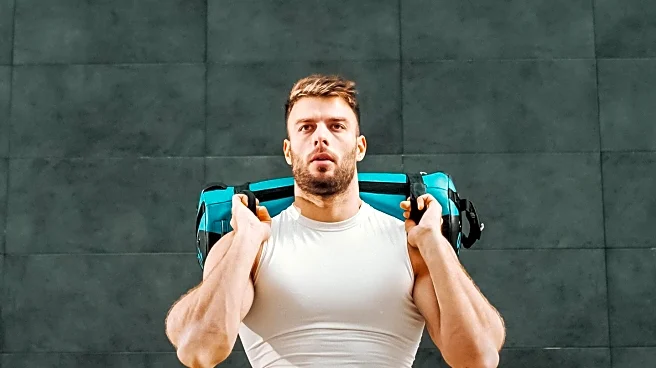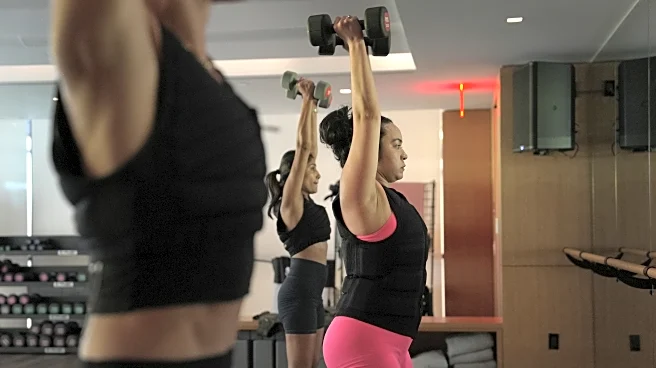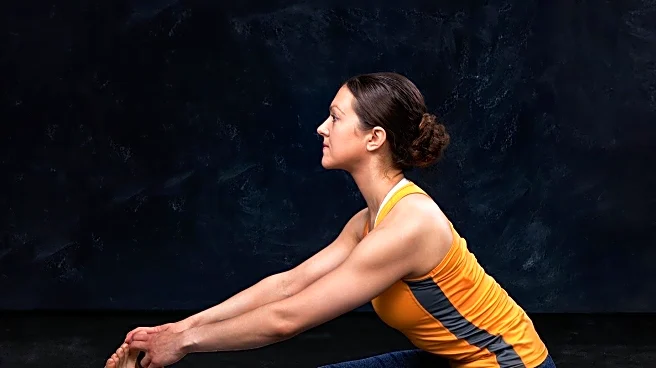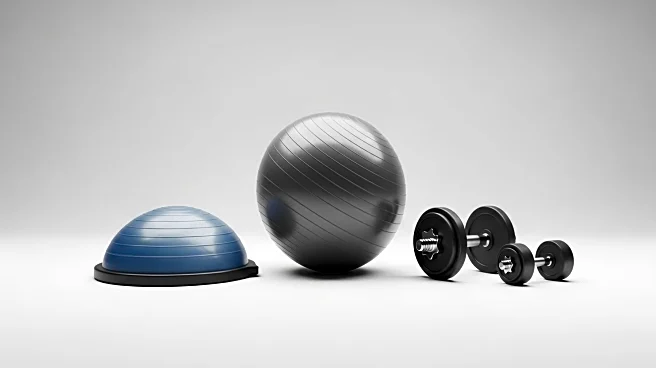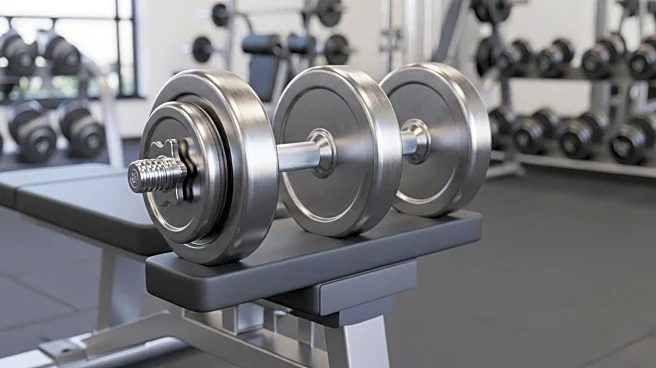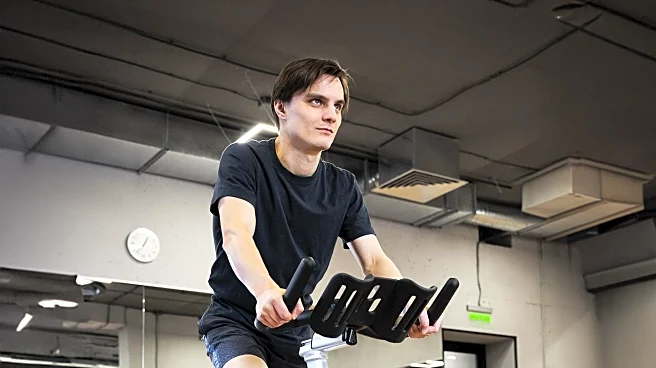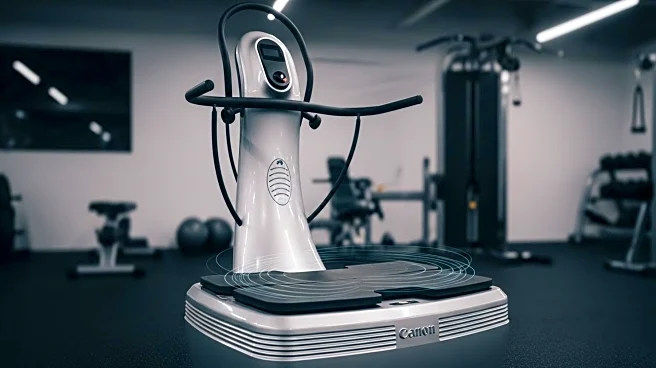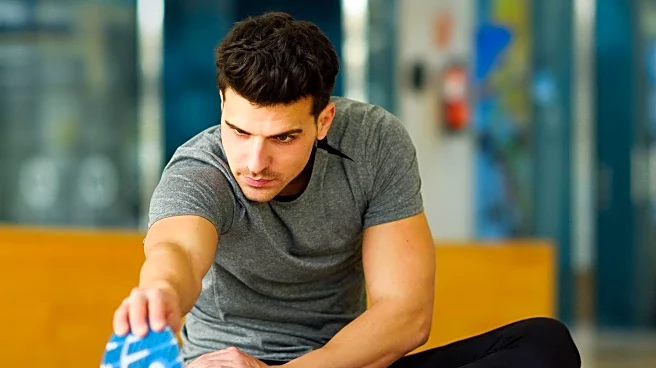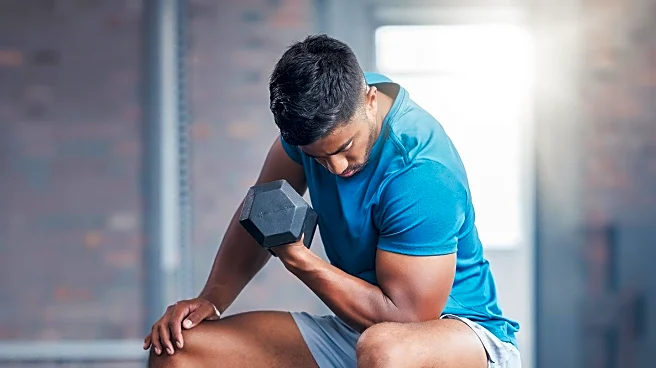What's Happening?
Weighted vests have gained popularity in the fitness community for their ability to add passive resistance to workouts, enhancing muscle endurance and bone strength. Fitness experts, including Dani Singer, CPT, and Meg Darmofal, DPT, emphasize the importance of starting with a light weight, approximately five percent of one's body weight, to avoid injury and ensure proper posture. Weighted vests are particularly beneficial for women, as they can help combat osteoporosis by increasing bone density. The experts recommend using the same weight for various exercises initially and gradually increasing the load as one's fitness level improves. Signs that a vest is too heavy include slouching, lower back pain, and labored breathing, indicating the need to reduce the weight.
Why It's Important?
The use of weighted vests in fitness routines can significantly impact public health, particularly for women at risk of osteoporosis. By incorporating weighted vests, individuals can improve their cardiovascular fitness, muscular endurance, and bone density, potentially reducing healthcare costs associated with bone-related conditions. The guidance provided by fitness experts ensures safe usage, minimizing the risk of injury and promoting sustainable exercise habits. As more people adopt weighted vests, the fitness industry may see increased demand for adjustable and varied weight options, influencing product development and market trends.
What's Next?
As weighted vests become more integrated into fitness routines, manufacturers may focus on creating more adjustable and user-friendly designs to cater to varying fitness levels. Fitness professionals might develop specialized training programs incorporating weighted vests, offering classes and workshops to educate users on safe practices. Additionally, research into the long-term benefits of weighted vest usage could further validate their effectiveness, potentially leading to broader adoption in physical therapy and rehabilitation settings.
Beyond the Headlines
The growing popularity of weighted vests highlights a shift towards more personalized and adaptable fitness solutions. This trend reflects a broader cultural movement towards self-directed health management, where individuals seek tools that allow them to tailor their exercise routines to their specific needs. The emphasis on progressive overload and gradual weight increase aligns with principles of sustainable fitness, encouraging long-term commitment to health and wellness.
